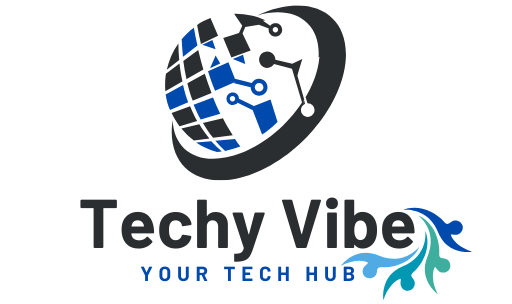Remote work has rapidly transformed from a temporary necessity to a permanent fixture in the modern workplace. While flexibility is a clear advantage, challenges like communication gaps, scattered resources, and inefficient collaboration often arise. Enter pod software for remote work a game-changing tool designed to address these challenges and create seamless, collaborative environments for distributed teams.
If you’ve been looking for a smarter way to manage your remote workforce, this guide will explain what pod software is, its key benefits, and how to implement it effectively.
What is Pod Software for Remote Work?
Think of pod software as a supercharged collaboration tool tailored specifically for small, self-contained teams (or “pods”) within larger organizations. It’s designed to help remote teams function like mini-startups by streamlining communication, managing projects, and keeping resources in one place. Unlike traditional collaboration platforms that cater to the entire organization, pod software focuses on optimizing productivity at the team level.
At its core, pod software offers a cohesive digital workspace for teams to collaborate in real time, plan projects, and execute tasks effectively. It’s not just about video calls—it’s about enabling autonomous, agile teams to adapt and thrive in a remote work environment.
Why Pod Software is a Must for Remote Teams
Implementing pod software can revolutionize the way your distributed workforce operates. Here’s why companies are turning to this innovative tool:
1. Centralized Communication and Collaboration
Pod software eliminates the clutter of multiple apps by consolidating communication tools into one space. It combines messaging, video calls, and task discussions, creating a focused environment for meaningful conversations. By dedicating specific spaces to each team or project, employees stay connected without being overwhelmed by irrelevant notifications.
2. Simplified Project Management
Keeping track of to-dos, deadlines, and deliverables becomes effortless with pod software’s built-in project management features. Gantt charts, Kanban boards, and real-time progress tracking ensure that every team member knows what’s on their plate and when it’s due. This clarity minimizes confusion and keeps productivity on track.
3. Increased Agility
Remote teams often need to pivot quickly. With pod software, you can create or restructure pods in an instant. Whether you’re addressing an urgent client need, responding to market changes, or experimenting with a new idea, pod software’s flexibility makes it easy to adapt and regroup.
4. Enhanced Resource Accessibility
Scattered files and misplaced documents waste precious time. Pod software integrates seamlessly with cloud storage platforms, offering a centralized database that’s always accessible. Whether it’s a client proposal, team guidelines, or design templates, every resource is at your team’s fingertips.
5. Robust Security
Security is a top concern for remote teams dealing with sensitive data. Pod software often includes features like end-to-end encryption, user authentication, and permission controls, ensuring your team’s information remains secure and accessible only to authorized members.
Key Features of Pod Software
Here’s what makes pod software a standout tool for remote teams:
1. Unified Communication Hub
All team communication whether via chat, voice, or video happens in one secure platform. No more toggling between apps or losing vital messages in email threads.
2. Customizable Workspaces
Teams vary, and so should their tools. Pod software equips users with customizable dashboards and workflows tailored to suit your team’s specific projects and preferences.
3. Real-Time Insights
With built-in analytics, managers can monitor team engagement, project progress, and resource allocation. These insights allow for strategic decision-making and continuous improvement.
4. Third-Party Integrations
Pod software doesn’t replace your favorite tools—it works with them. Whether it’s Slack, Trello, Google Drive, or Microsoft Teams, integrations ensure your team has access to everything they need in one place.
5. Built-in Task Automation
From sending reminders to updating task statuses, automation features reduce repetitive manual work. This means your team can focus on what really matters getting things done.
How Pod Software Transforms Your Work Culture
Pod software isn’t just a tool it’s a mindset shift. Here’s how it reshapes collaboration and productivity:
1. Fosters Autonomy
Unlike top-down systems, pod software encourages independent decision-making within teams. Each pod is empowered to set its own goals, allocate responsibilities, and execute strategies, creating a culture of ownership and accountability.
2. Encourages Stronger Team Bonds
Dedicated workspaces for each pod allow team members to build closer relationships, even when working remotely. By creating a sense of community, pod software boosts morale and fosters collaboration.
3. Facilitates Data-Driven Decisions
With real-time metrics at their disposal, teams can analyze what’s working and adjust their workflows accordingly. Whether it’s reallocating resources or fine-tuning timelines, pod software ensures teams make smarter decisions, faster.
Implementing Pod Software in Your Team
If you’re ready to introduce pod software to your organization, here’s how to get started:
Step 1. Assess Your Needs
Consider your team’s pain points and prioritize features that address them. Are communication gaps an issue? Do you need better resource management? This clarity will guide your search for the right tool.
Step 2. Evaluate Your Options
Research software providers and request demos or trials. Look for intuitive platforms with scalability, robust security features, and seamless integrations with tools you already use.
Step 3. Train Your Team
Even the best tools are useless if no one knows how to use them. Provide comprehensive training to ensure every member feels confident navigating the software.
Step 4. Pilot a Small Launch
Start with a specific team or project to test the software in action. Gather feedback, tweak workflows, and refine the process before rolling it out company-wide.
Step 5. Monitor and Optimize
After implementation, continue to track progress and gather feedback. Use analytics to measure ROI and make ongoing improvements to workflows.
FAQs About Pod Software
Q1. How is pod software different from regular collaborative tools?
Unlike general tools that serve entire companies, pod software is tailored to small, autonomous teams. It focuses on localized collaboration, agility, and customized workflows.
Q2. Can pod software adapt to non-remote work environments?
Absolutely! While it’s a favorite among remote teams, pod software is just as effective for hybrid or in-office setups.
Q3. Is pod software costly to implement?
Costs vary based on the software’s features, your team’s size, and your budget. Most providers offer scalable plans, and the time/money you save in productivity often offsets the investment.
Q4. What’s the best pod software platform?
The “best” platform depends on your needs. Popular options include Monday.com, ClickUp, and Trello. Test out different platforms to see which one aligns with your team’s workflow.
Q5. Does pod software work for creative teams?
Definitely! Creative teams benefit from pod software’s collaborative workspaces. Design briefs, feedback loops, and brainstorming sessions all happen in one centralized platform.
Empower Your Team with the Right Tools
Pod software is revolutionizing how remote teams work. Its focus on creating self-sufficient pods drives productivity, fosters collaboration, and ensures every member operates at their best. By implementing pod software, you’re not just providing a tool—you’re empowering a new way of working.
Looking for the perfect pod collaboration software? At Techy Vibe, we’re committed to helping you find the right fit for your remote team. For more insights into the tools and platforms shaping the modern workplace, explore our blog or reach out to our team today.



